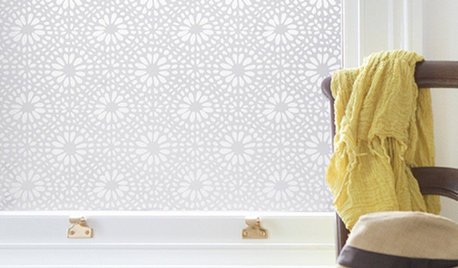Never-ending door saga - veneer problem
2ajsmama
13 years ago
Related Stories

ECLECTIC HOMESHouzz Tour: Problem Solving on a Sloped Lot in Austin
A tricky lot and a big oak tree make building a family’s new home a Texas-size adventure
Full Story
HOUSEKEEPING10 Problems Your House May Be Trying to Show You
Ignore some of these signs and you may end up with major issues. We tell you which are normal and which are cause for concern
Full Story
DECORATING GUIDES5 Pet Problems Solved by Design
Design-Friendly Ideas for Pet Beds, Bowls, Doors — and yes, the Litter Box
Full Story
REMODELING GUIDESThe Hidden Problems in Old Houses
Before snatching up an old home, get to know what you’re in for by understanding the potential horrors that lurk below the surface
Full Story
DECORATING GUIDESSolve Privacy Problems With Window Film
Let the light in and keep prying eyes out with an inexpensive and decorative window film you can apply yourself
Full Story
LANDSCAPE DESIGNProblem Solving With the Pros: How to Build a Garden in an Urban Canyon
Skyscrapers, noise and deep shade create an unlikely sweet spot for a timeless green retreat in New York City
Full Story
FURNITURESlipcovers: Problem Solvers With Style
9 Great Ways to Change Up Your Look With the Ever-Practical Slipcover
Full Story
MOST POPULARSo You Say: 30 Design Mistakes You Should Never Make
Drop the paint can, step away from the brick and read this remodeling advice from people who’ve been there
Full Story
DECORATING GUIDESLiving Room Features That Never Go Out of Style
These key pieces will help your living room keep its good looks, no matter what's in fashion
Full Story
DOORSKnow Your House: Interior Door Parts and Styles
Learn all the possibilities for your doors, and you may never default to the standard six-panel again
Full Story








someone2010
2ajsmamaOriginal Author
Related Professionals
Canton Cabinets & Cabinetry · Watauga Cabinets & Cabinetry · Folsom Carpenters · Coto De Caza Carpenters · Avondale Flooring Contractors · Fort Lauderdale Flooring Contractors · Hilton Head Island Flooring Contractors · Olympia Flooring Contractors · Reno Flooring Contractors · Tucson Flooring Contractors · Carlsbad Furniture & Accessories · Mesa Furniture & Accessories · Newton Furniture & Accessories · Lake Arrowhead Furniture & Accessories · Robbinsdale Furniture & Accessoriessomeone2010
2ajsmamaOriginal Author
someone2010
2ajsmamaOriginal Author
2ajsmamaOriginal Author
someone2010
2ajsmamaOriginal Author
someone2010
2ajsmamaOriginal Author
someone2010
sombreuil_mongrel
2ajsmamaOriginal Author
someone2010
sombreuil_mongrel